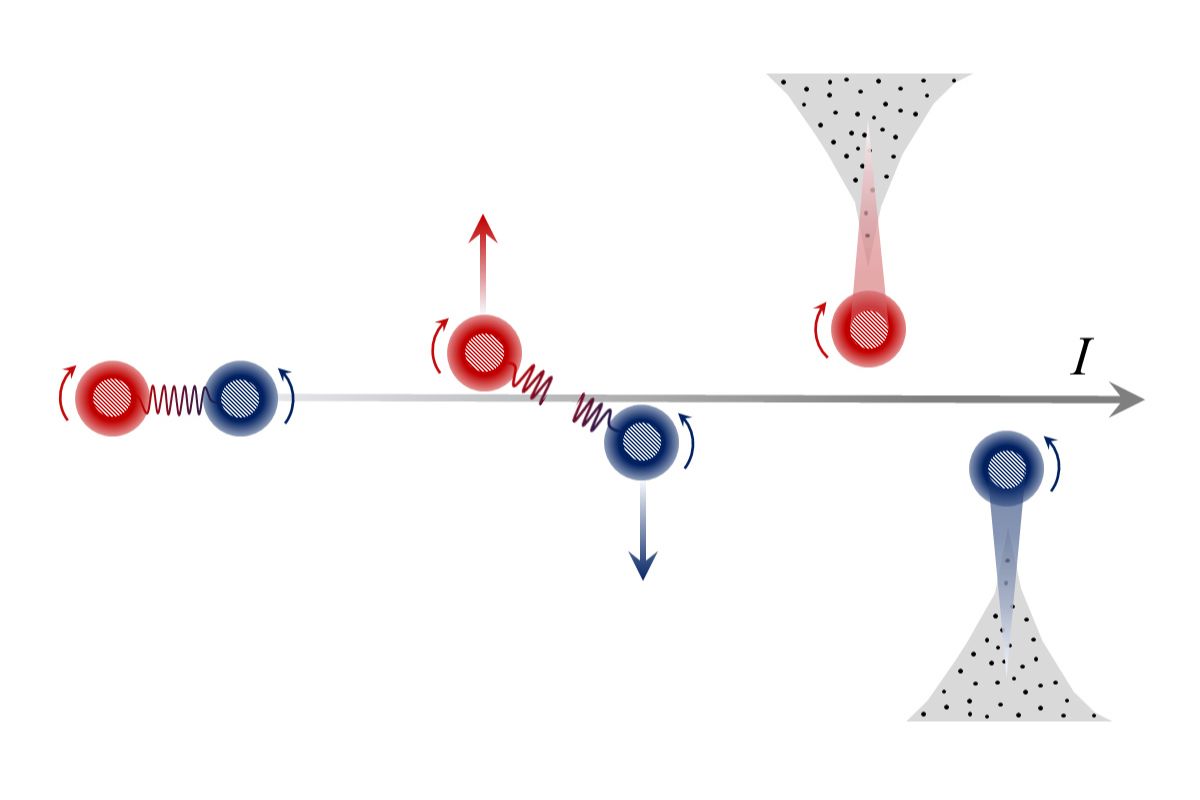
What is the Berezinskii-Kosterlitz-Thouless (BKT) Transition? The Berezinskii-Kosterlitz-Thouless Transition is a phase transition in two-dimensional systems with continuous symmetry. Unlike typical transitions involving symmetry breaking, the BKT transition involves the binding and unbinding of vortex-antivortex pairs. This unique behavior leads to a change from a disordered phase to a quasi-ordered phase without a traditional order parameter. Named after physicists Vadim Berezinskii, J. Michael Kosterlitz, and David Thouless, this transition has profound implications in fields like superconductivity, magnetism, and even the behavior of thin films. Understanding the BKT transition helps scientists grasp how certain materials behave at low temperatures, providing insights into both theoretical physics and practical applications.
What is the Berezinskii-Kosterlitz-Thouless Transition?
The Berezinskii-Kosterlitz-Thouless (BKT) transition is a fascinating phenomenon in physics. It describes a phase transition in two-dimensional systems with continuous symmetries. This transition is unique because it doesn't follow the traditional patterns seen in three-dimensional systems.
- Named after physicists Vadim Berezinskii, J. Michael Kosterlitz, and David Thouless, who developed the theory in the 1970s.
- The BKT transition occurs in two-dimensional systems, such as thin films of superfluids or superconductors.
- Unlike typical phase transitions, the BKT transition involves the binding and unbinding of vortex-antivortex pairs.
- This transition is characterized by a sudden change in the correlation length of the system.
- The BKT transition doesn't involve a change in symmetry, which is unusual for phase transitions.
How Does the BKT Transition Work?
Understanding the mechanics of the BKT transition can be quite complex. It involves intricate interactions between vortices and antivortices in a two-dimensional plane.
- At temperatures below the transition temperature, vortices and antivortices form bound pairs.
- As the temperature increases, these pairs unbind, leading to a disordered phase.
- The transition temperature is known as the BKT temperature.
- The unbinding of vortex-antivortex pairs leads to a sudden increase in the system's susceptibility.
- This transition can be observed in systems like thin superconducting films and two-dimensional XY models.
Applications of the BKT Transition
The BKT transition isn't just a theoretical concept; it has practical applications in various fields of physics and materials science.
- It helps in understanding the behavior of thin superconducting films.
- The transition is crucial for studying two-dimensional superfluids.
- It plays a role in the behavior of certain types of magnets.
- The BKT transition is also relevant in the study of liquid crystals.
- It provides insights into the behavior of two-dimensional electron gases.
Experimental Evidence of the BKT Transition
Experimental verification of the BKT transition has been a significant achievement in physics. Various experiments have confirmed the theoretical predictions.
- The first experimental evidence came from studies of thin superconducting films.
- Experiments on superfluid helium films have also demonstrated the BKT transition.
- The transition has been observed in two-dimensional XY magnets.
- Recent experiments have used advanced techniques like scanning tunneling microscopy to study the BKT transition.
- The BKT transition has been confirmed in cold atom systems, providing further evidence of its universality.
Theoretical Implications of the BKT Transition
The BKT transition has profound implications for our understanding of phase transitions and critical phenomena in two-dimensional systems.
- It challenges the traditional Landau theory of phase transitions.
- The transition introduces the concept of topological defects, such as vortices and antivortices.
- It has led to the development of new mathematical techniques for studying two-dimensional systems.
- The BKT transition has inspired further research into topological phase transitions.
- It has broadened our understanding of critical phenomena in low-dimensional systems.
Nobel Prize Recognition
The significance of the BKT transition was recognized with the awarding of the Nobel Prize in Physics.
- In 2016, J. Michael Kosterlitz and David Thouless were awarded the Nobel Prize in Physics.
- Vadim Berezinskii, who passed away in 1980, was not eligible for the prize.
- The Nobel Committee recognized their work for "theoretical discoveries of topological phase transitions and topological phases of matter."
- The award highlighted the importance of the BKT transition in the broader context of condensed matter physics.
- The recognition has spurred further research into topological phases and transitions.
The Final Word on BKT Transition
The Berezinskii-Kosterlitz-Thouless (BKT) transition is a fascinating phenomenon in physics. It explains how certain materials change their state without the usual signs of a phase transition, like a sudden change in temperature. Instead, it involves the binding and unbinding of vortex pairs. This transition has applications in superconductors, thin films, and even quantum computing. Understanding BKT can lead to advancements in technology and materials science.
The work of Berezinskii, Kosterlitz, and Thouless earned them a Nobel Prize in 2016, highlighting the importance of their discovery. Their research has opened doors to new ways of thinking about phase transitions and critical phenomena.
So, next time you hear about superconductors or thin films, remember the BKT transition and the groundbreaking work behind it. It’s a key piece of the puzzle in modern physics.
Was this page helpful?
Our commitment to delivering trustworthy and engaging content is at the heart of what we do. Each fact on our site is contributed by real users like you, bringing a wealth of diverse insights and information. To ensure the highest standards of accuracy and reliability, our dedicated editors meticulously review each submission. This process guarantees that the facts we share are not only fascinating but also credible. Trust in our commitment to quality and authenticity as you explore and learn with us.
